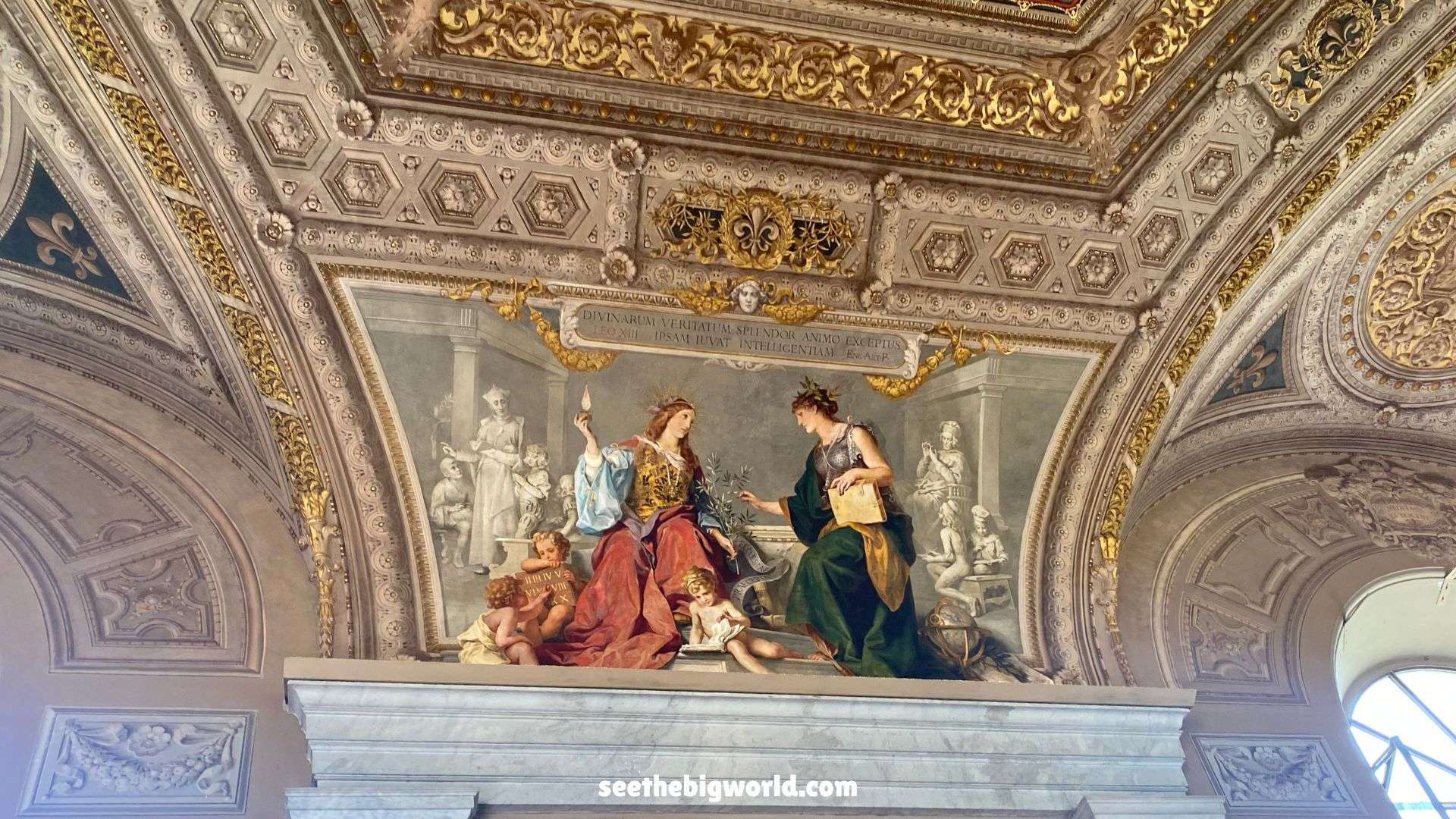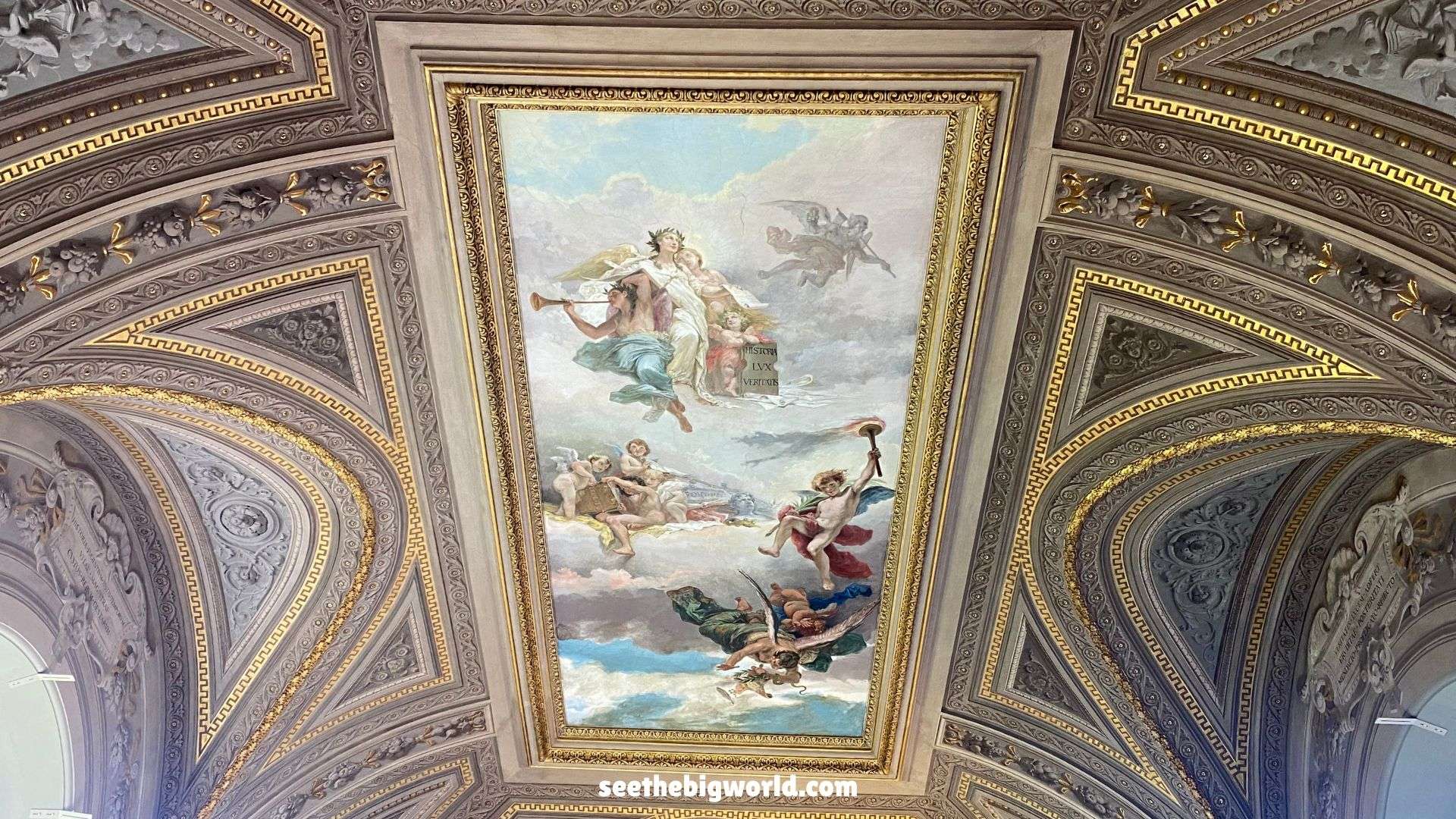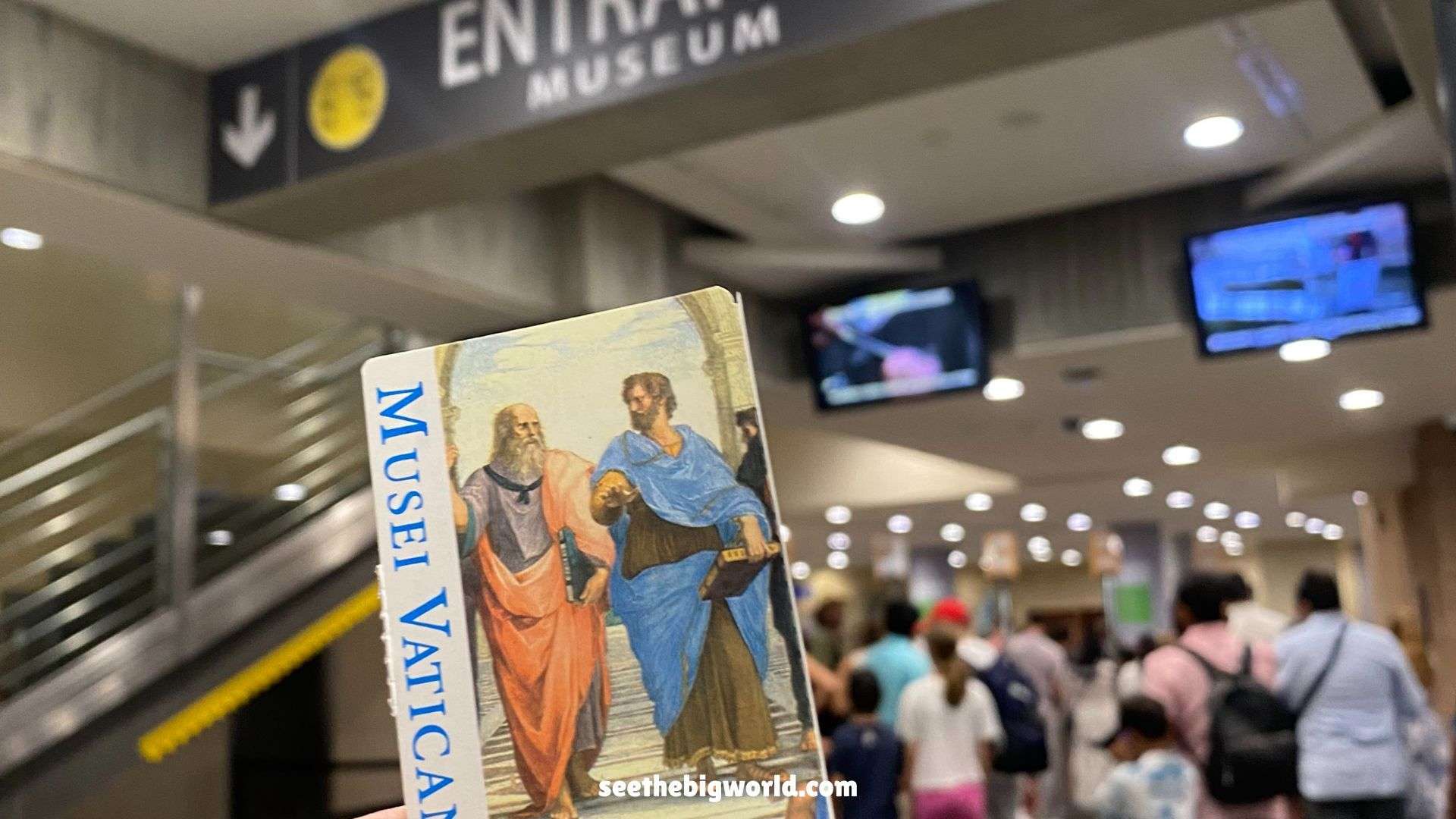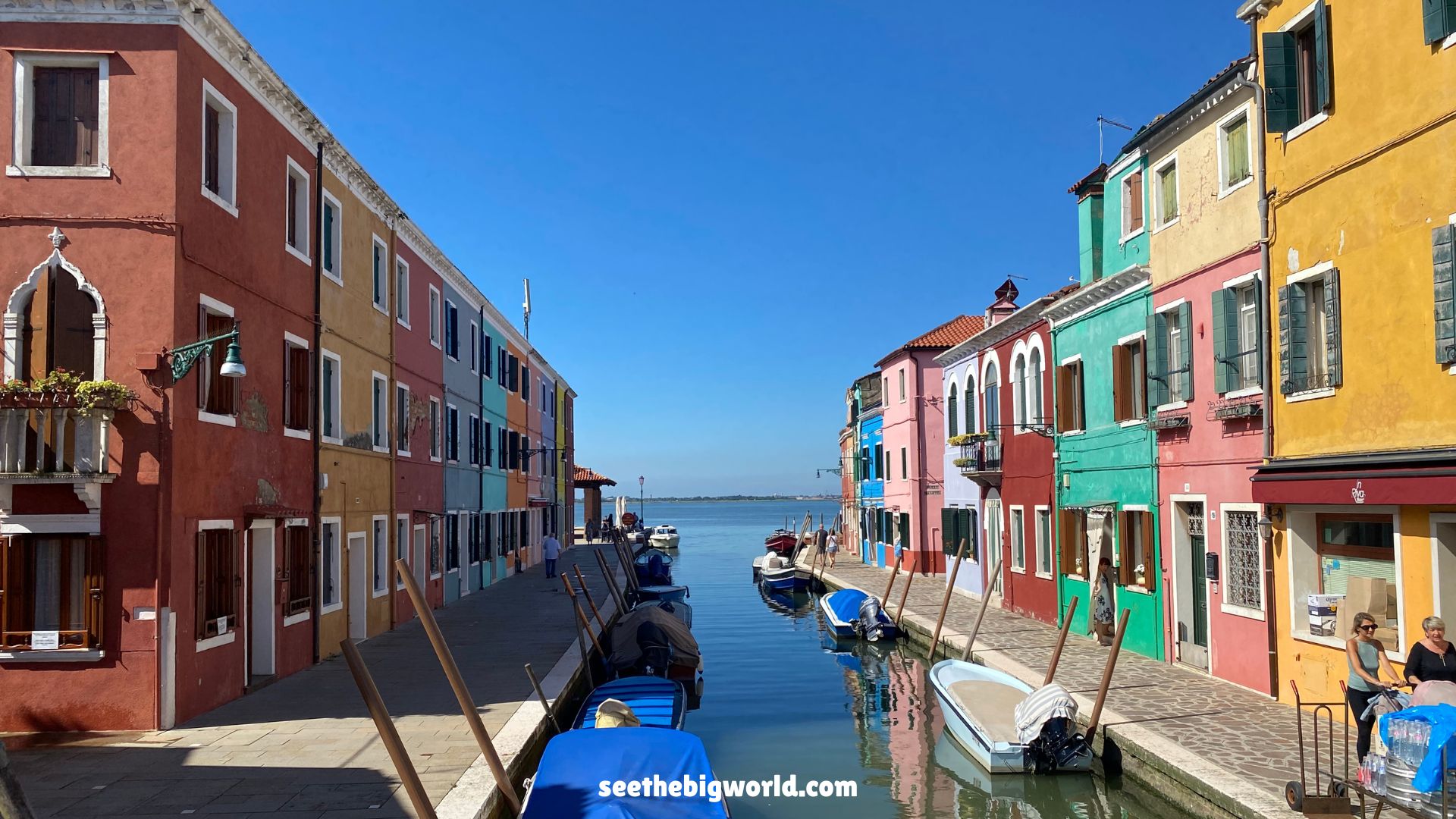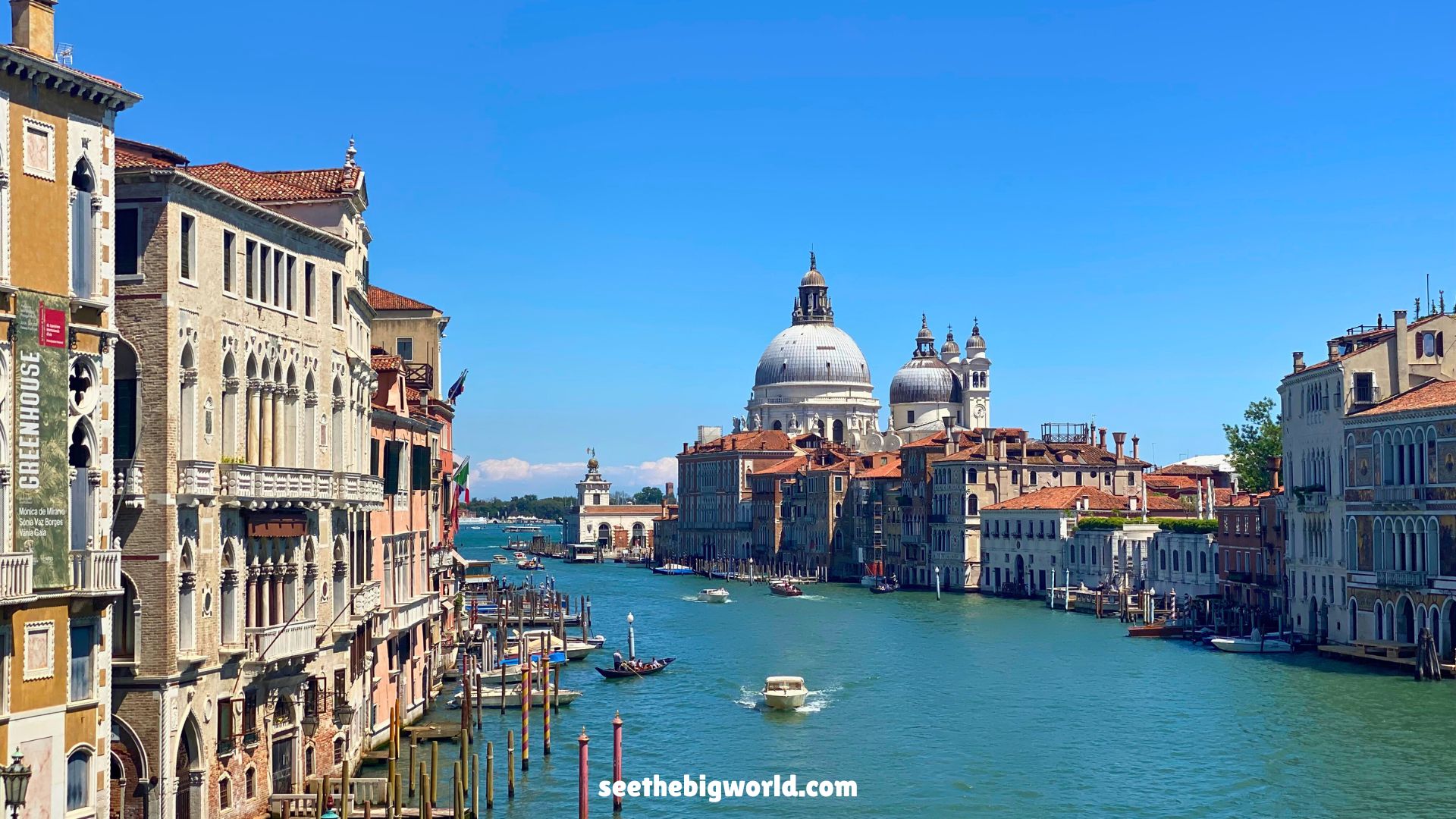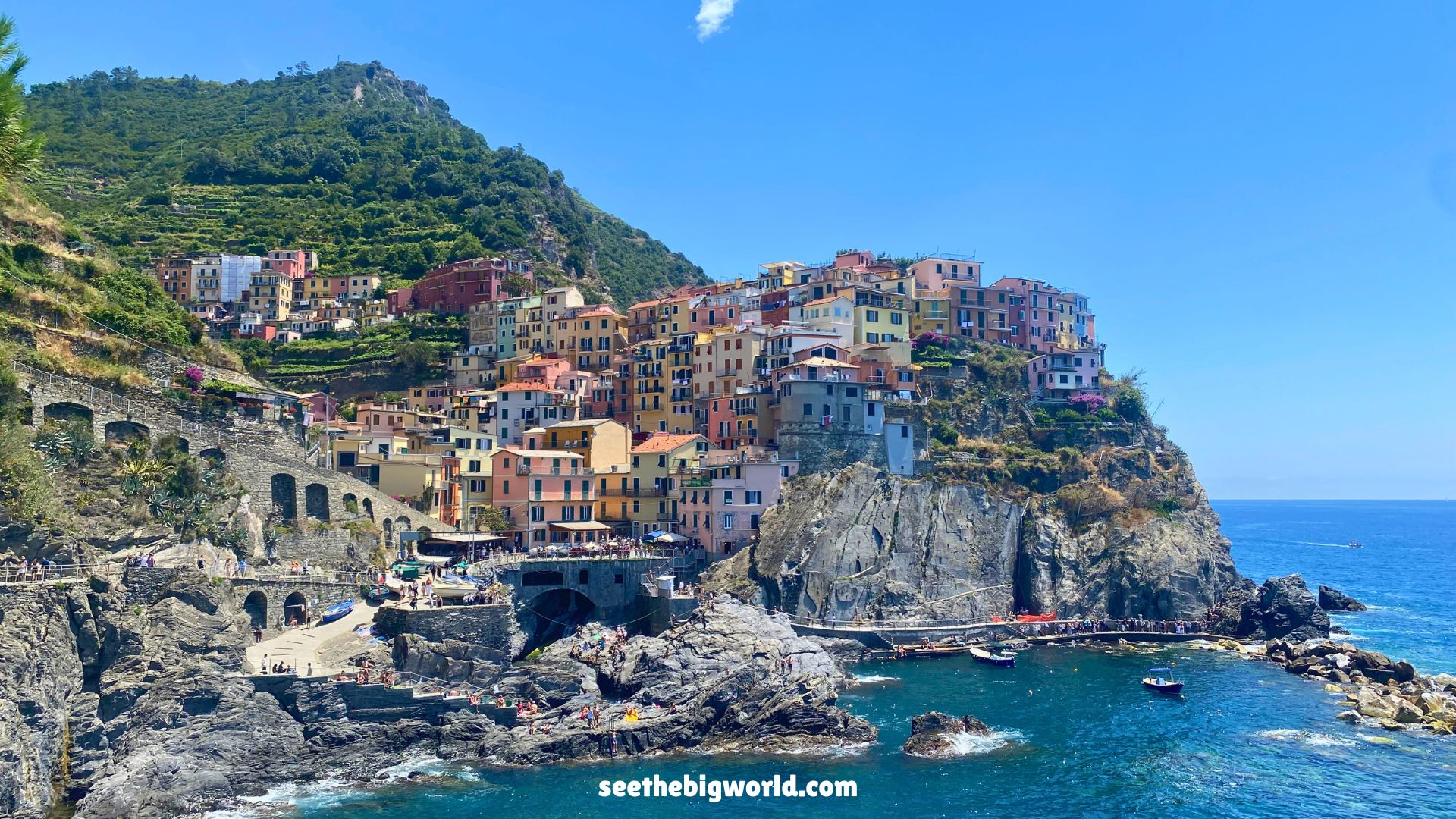Updated on 25/11/2025 | Published on 04/01/2025
Vatican Museums Review – The Vatican Museums (Musei Vaticani) is a must-visit landmark for first-time travellers to Rome. This guide shares my personal experience and covers the museum’s rich history, top 10 highlights (including the Sistine Chapel, Creation of Adam, The Last Judgment, and The School of Athens), an essential map and route guide, why avoiding shortcuts is recommended, the best visiting times, skip-the-line ticket tips, and transport options.
Read Before Your Trip
City Guides:Rome|Milan|Florence|Venice|Cinque Terre
Rome Articles:Colosseum|Pantheon|Spanish Steps|Trevi Fountain|Vatican Museums|St. Peter’s Basilica
Milan Articles:Duomo di Milano|Galleria Vittorio Emanuele II|The Last Supper
Passes:Euro Train Pass|Roma Pass|Omnia Card
Colosseum:Get Your Guide|KLOOK
Vatican Museums:Get Your Guide|KLOOK
Duomo di Milano:Get Your Guide|KLOOK
Florence Cathedral:Get Your Guide|KLOOK
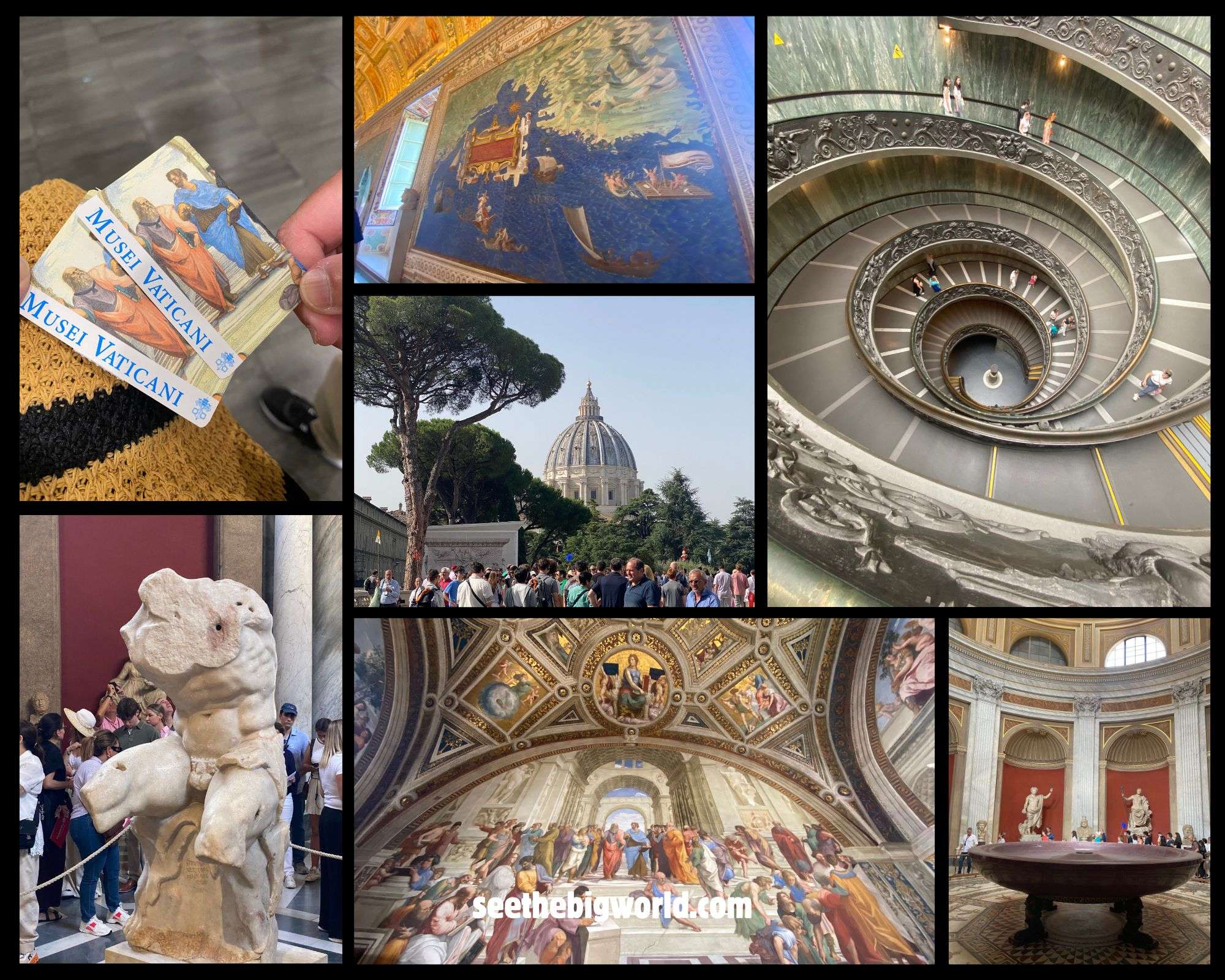
Why Should You Visit Vatican Museums? (History and Features)
Vatican City is the smallest country in the world, located within the city of Rome, covering only 44 hectares. It holds a profound religious and cultural significance as the spiritual and administrative centre of the Catholic Church. It is the residence of the Pope and houses world-renowned treasures such as St. Peter’s Basilica, the Sistine Chapel, and the Vatican Museums.
Since its establishment in 1506, the Vatican Museums have become one of the most influential and valuable museums in the world, boasting a collection of over 70,000 artworks spanning from ancient relics to contemporary pieces, covering masterpieces from various periods of history.
Whether it’s Michelangelo’s Sistine Chapel Ceiling or Raphael’s School of Athens, these masterpieces attract visitors and pilgrims from all over the world, making it one of the most religiously significant and artistically valuable places on Earth.

As a centre of global artistic treasures, one of the key features of the Vatican Museums is its profound display of Renaissance art. Michelangelo’s Sistine Chapel Ceiling is one of the most iconic pieces in the museum, depicting the Biblical creation story, from Genesis to The Last Judgement. Every brushstroke radiates divine power. Another significant artwork is Raphael’s School of Athens, which, with its beautiful composition and philosophical expressions, represents the pinnacle of Renaissance art. The figures in the painting are both historically significant and full of symbolic meaning.
In addition to painting, the museum is home to an extensive collection of sculptures from Ancient Rome and Greece, showcasing ancient artists’ deep understanding of human aesthetics. Among the most famous are the Laocoön and His Sons and the Belvedere Torlonia, which not only broke with traditional sculptural techniques but also conveyed strong dynamic tension in their emotional expressions.

Moreover, the Vatican Museums boasts a rich collection of Ancient Egyptian artefacts, Renaissance paintings, Italian maps, tapestries, and other priceless items. These artworks display a harmonious fusion of history, religion, culture, and philosophy, allowing each visitor to deeply appreciate the splendour and depth of human civilisation.
The architecture of the Vatican Museums is itself a major highlight, with ornate corridors and exquisite spiral staircases. Every architectural detail showcases the perfect integration of art and design. Whether driven by a passion for art or a curiosity for history, the museum provides an unparalleled sensory experience.
Vatican Museums Visit Info
How to Get to Vatican Museums?
The Vatican Museums is located within Vatican City, and getting there is quite convenient:
- Metro:Take Line A (Red Line) to Cipro station, then it’s about a 5-minute walk; or get off at Ottaviano station, which is about a 10-minute walk to the entrance.
- Google Maps Link
Opening Hours
- Monday to Saturday: 09:00 – 18:00 (Last entry at 16:00)
- Sunday: Closed (Free entry on the last Sunday of each month, 09:00 – 14:00)
Tickets / Tours
Best Time to Visit
- It is recommended to visit as early as possible and avoid peak hours (10:00 AM - 12:00 PM). The last Sunday of every month offers free entry, but it can be very crowded, making it ideal for budget-conscious visitors.
Time Spent
- Without factoring in queues, it is recommended to allocate at least 4 hours. Art and history enthusiasts may want to set aside more time.
Are Backpacks Allowed?
- Small backpacks are allowed but must undergo security checks; larger luggage must be stored.
Is It Suitable for Children, Pregnant Visitors, or the Elderly?
- It is advisable to bring a stroller or wheelchair and be mindful of stairs and crowd levels within the museum.
Nearby Attraction(s)
- St. Peter’s Basilica:One of the largest churches in the world and a symbol of Catholicism. This magnificent church features stunning architecture and priceless art, including Michelangelo’s design for the dome, drawing pilgrims and tourists from around the globe.
Vitican Museums Review / Experience
- Rating:🌎🌎🌎🌎🌎
- Time Spent:4 Hours
I wouldn’t call myself a museum enthusiast, but just like Taipei’s National Palace Museum, Europe’s three major museums – the Vatican Museums, the British Museum, and the Louvre – are must-visit destinations for any traveller with even a slight interest in history and culture.
However, since my trip to Rome was a last-minute decision and my schedule was tight, I couldn’t secure official tickets in advance. In the end, I had to buy tickets online at three times the original price. This is one of the main reasons I’m sharing my travel experience – I hope those of you planning your trip can book tickets early and avoid the same situation!
Among the many galleries in the Vatican Museums, my personal favourite is the Gallery of Maps. These historical hand-drawn maps beautifully showcase the changes through time. I’m not exaggerating when I say that if it weren’t for the crowds constantly urging me forward during peak season, I could have spent half a day just exploring the Gallery of Maps!



Vatican Museums Map and Visiting Routes
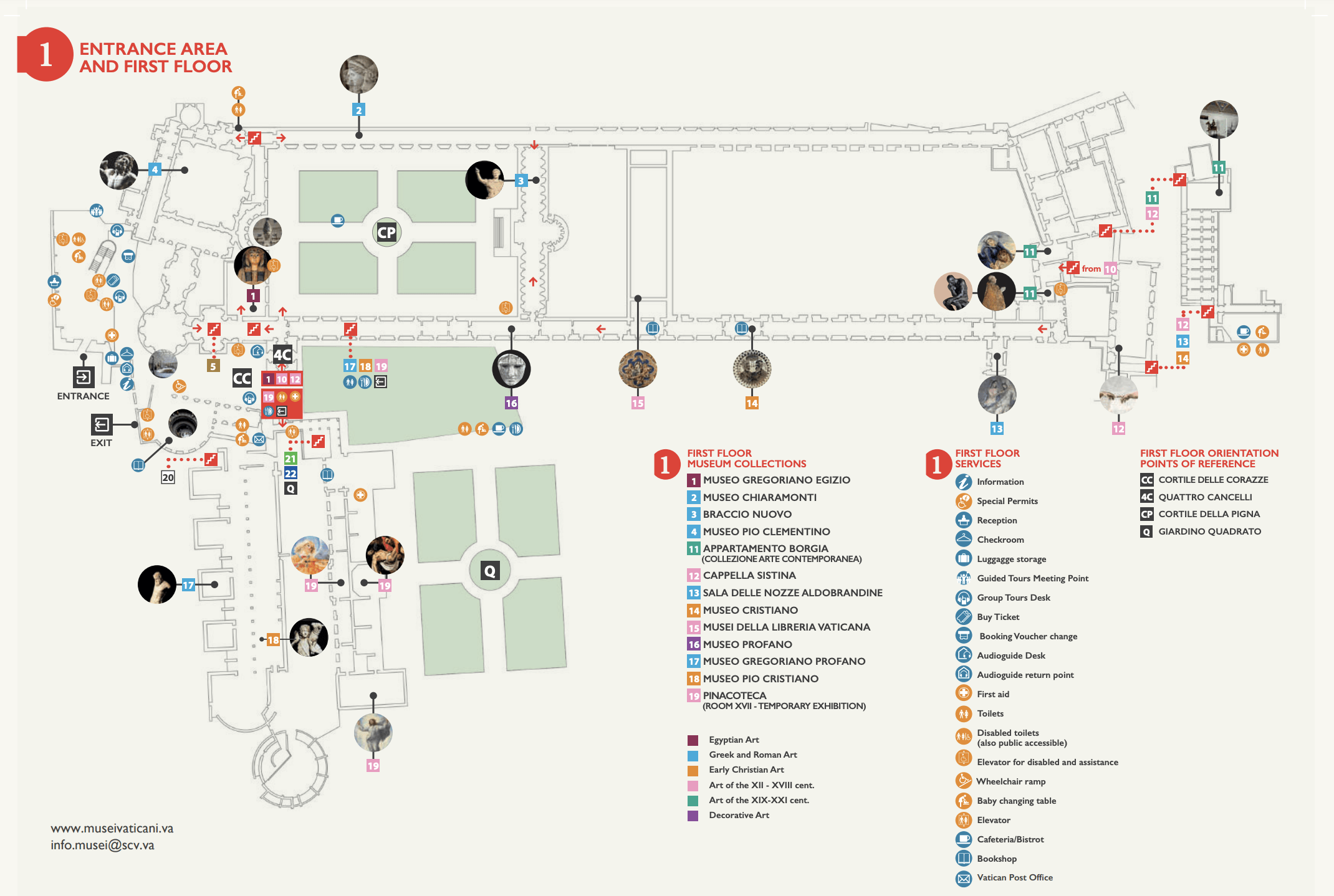
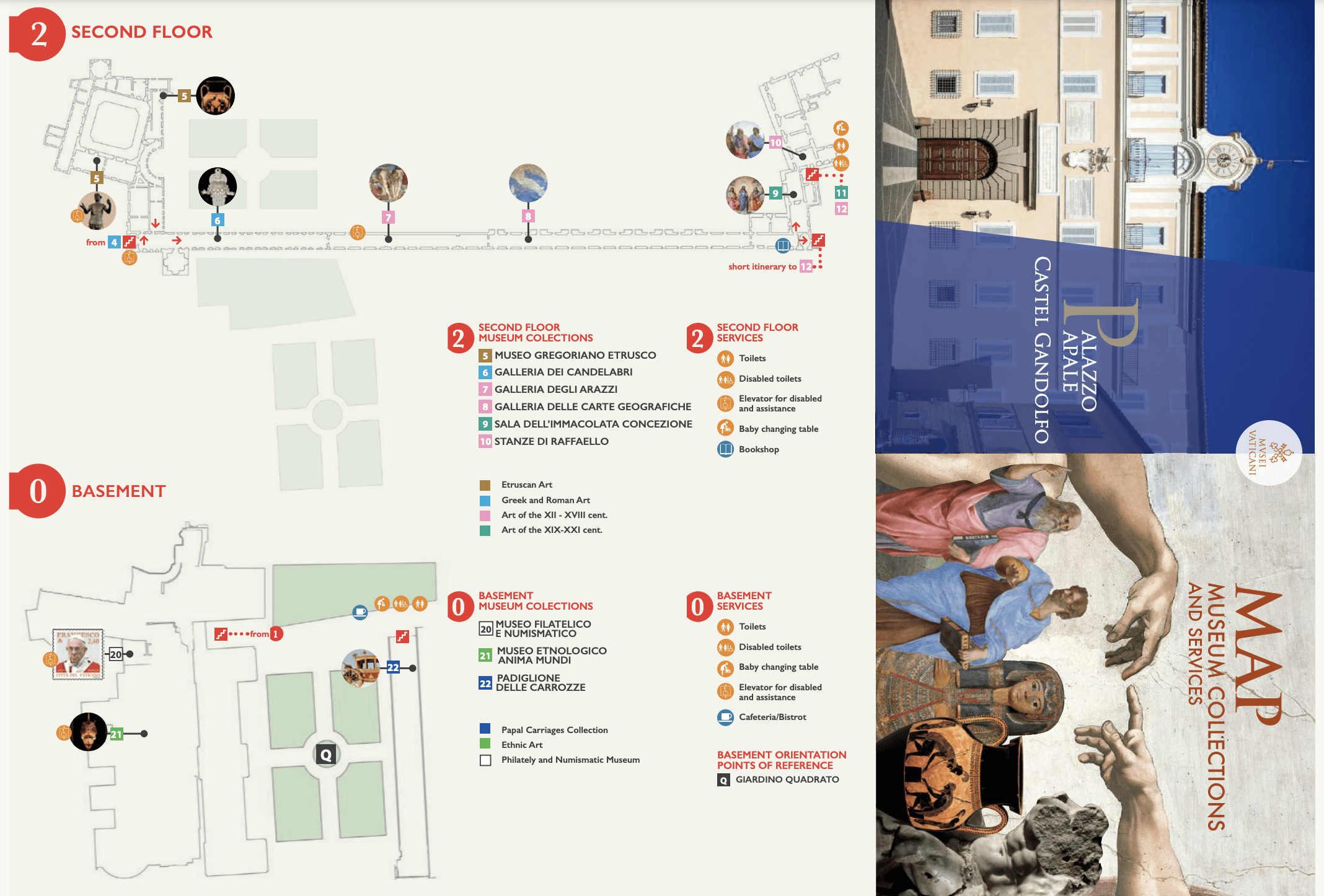
The map above shows the layout of the Vatican Museums. The route is designed as a one-way path, meaning you cannot go back once you’ve started. After entering the museum, except for a brief stop at the café in the courtyard, your visit will mostly proceed in a straight line.
It’s important to note that unless you’re on a special guided tour, do not attempt to shortcut through the Sistine Chapel to leave the museum. Some online sources suggest that, with specific tours, there may be a direct route to St. Peter’s Basilica from here. However, if you’re visiting independently, it’s recommended to follow the normal route through the long corridors (sections 13-20) after the Sistine Chapel. Not only will you get to enjoy more precious artworks along the way, but you’ll also reach the famous Spiral Staircase for a great photo opportunity!
Key Works to See in Order (numbers correspond to the map):
(Lower Level) 1:Egyptian Museum (Museo Egizio)
(Lower Level) 4:Pio-Clementine Museum: Laocoön and His Sons, Belvedere Torso, Nero’s Bathtub
(Upper Level) 7:Gallery of Tapestries
(Upper Level) 8:Gallery of Maps
(Upper Level) 10:Raphael Rooms (Stanze di Raffaello): The School of Athens
(Lower Level) 12:Sistine Chapel: The Creation of Adam, The Last Judgment
(Lower Level) EXIT:Spiral Staircase
Top 10 Highlights of Vatican Museums (Multiple Images)
Listed below in the order of the route for your reference, not ranked by my personal favourites. If I were to recommend one, it would definitely be the Gallery of Maps! If it’s not a peak season with heavy crowds, I could easily spend over 3 hours just in the Gallery of Maps!
1. Egyptian Museum (Museo Egizio)
The Egyptian Museum of the Vatican Museums holds numerous valuable artefacts related to the Nile civilisation, including mummies, sarcophagi, and hieroglyphic inscriptions, offering deep insights into ancient Egyptian culture and history.



2. Laocoön and His Sons
This Greek sculpture, completed in the 1st century BC, depicts the tragic scene of the Trojan priest Laocoön and his sons being entwined by serpents. Laocoön had warned the Trojans not to bring the wooden horse into the city but was ultimately killed by the snakes. The muscle lines and dynamic tension of the sculpture are vivid, influencing artists like Michelangelo during the Renaissance.

3. Belvedere Torso
This Greek sculpture, completed in the 1st century BC, remains only the torso, yet its finely carved muscles and the power of its seated pose still leave a profound impact. It is said that Pope Julius II collected this artwork, which Michelangelo greatly admired, seeing it as the perfect model for human proportion.

4. Nero’s Bathtub
This massive bathtub, carved from red marble, belonged to the infamous Roman emperor Nero. Its size and luxurious material showcase the extravagant lifestyle of the Roman imperial family at the time.

5. Gallery of Tapestries
The Gallery of Tapestries displays a series of exquisite Renaissance tapestries, primarily featuring Biblical stories. The intricate embroidery techniques recreate religious emotions, showcasing the exceptional craftsmanship of the time.
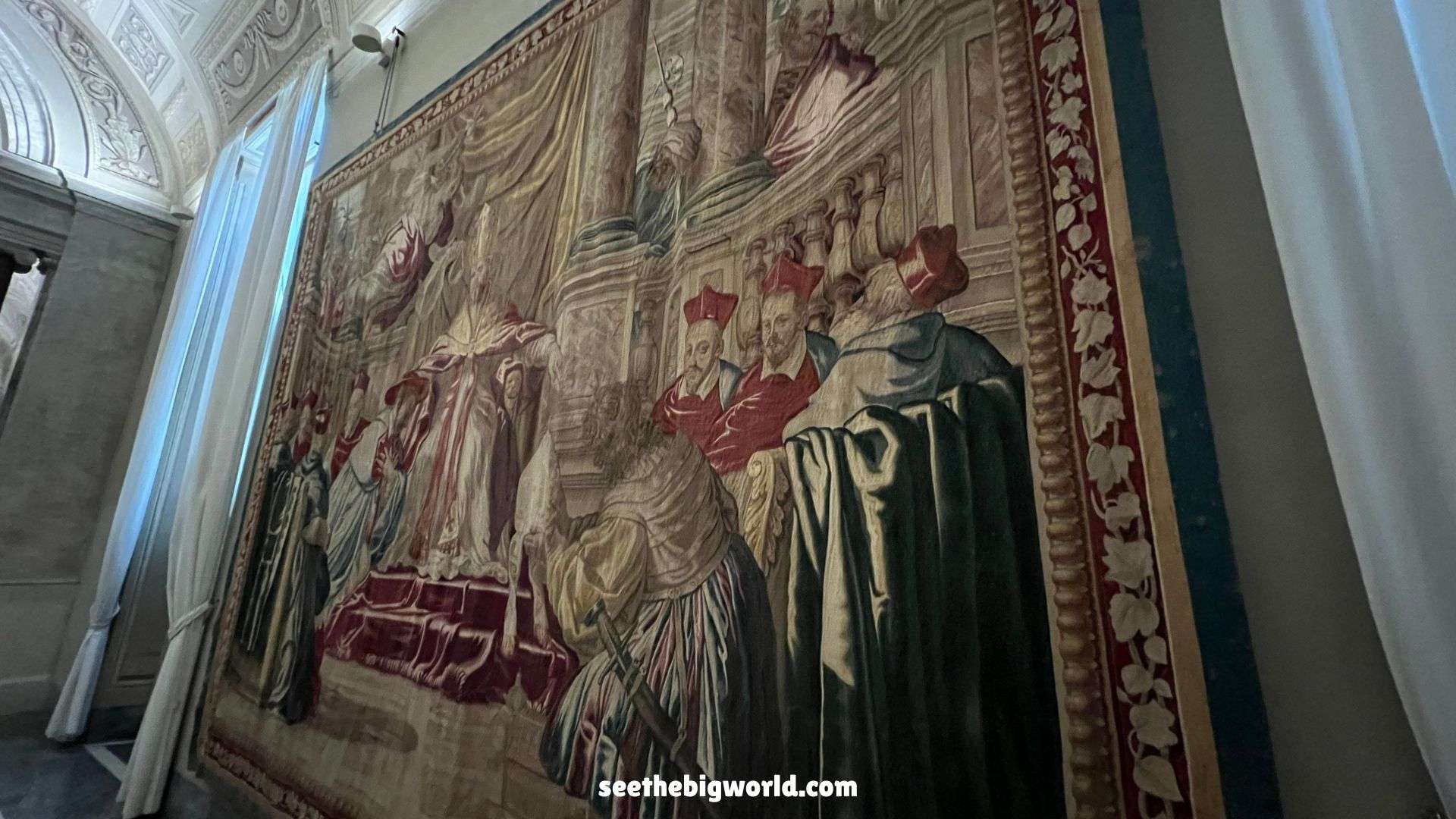
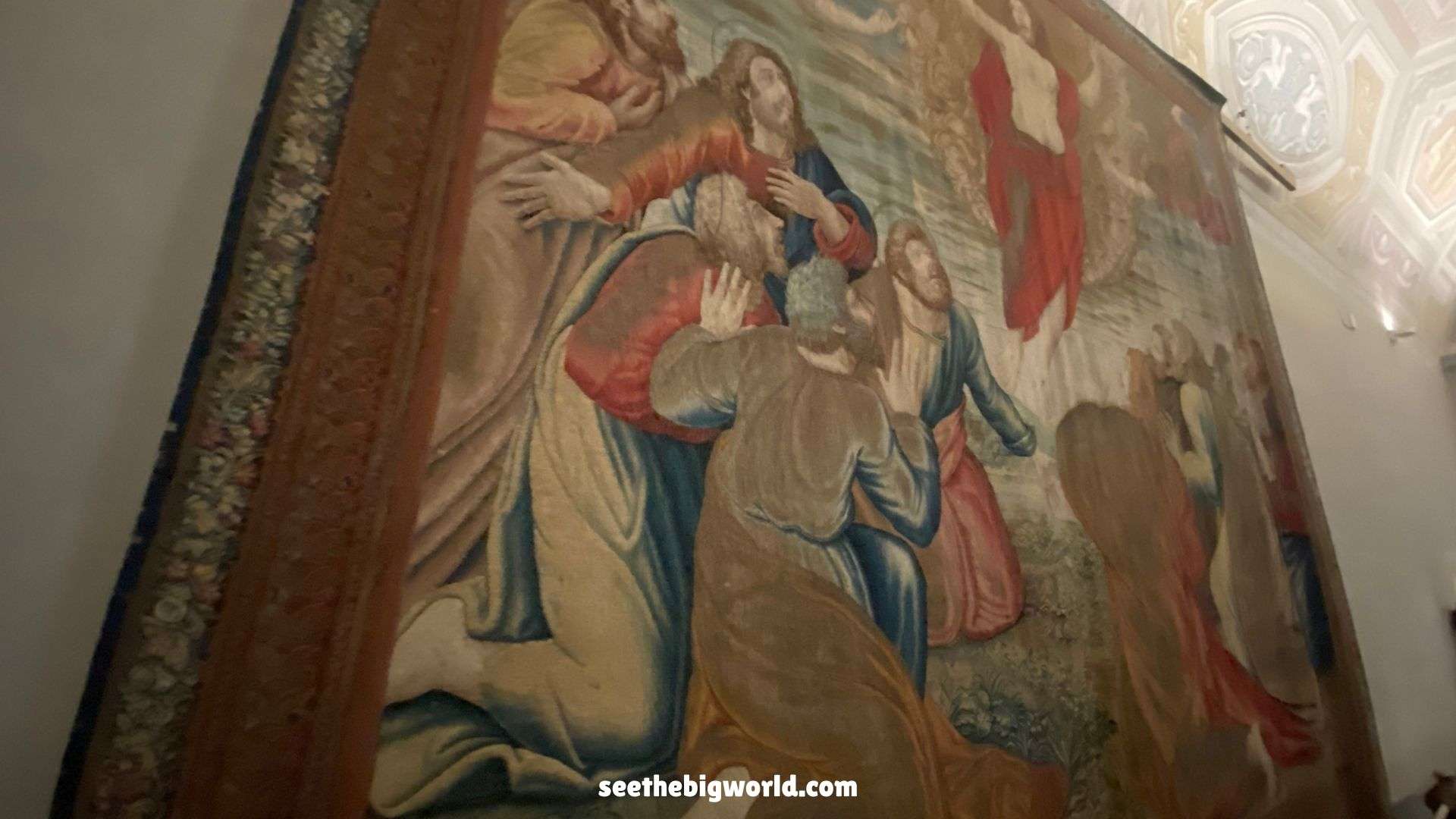
6. Gallery of Maps
This 120-metre-long corridor is themed around 16th-century maps of Italy, paired with a beautifully golden ceiling. It’s one of the most visually striking halls in the museum. These hand-drawn maps are not only works of art but also valuable records of the geography of the time.
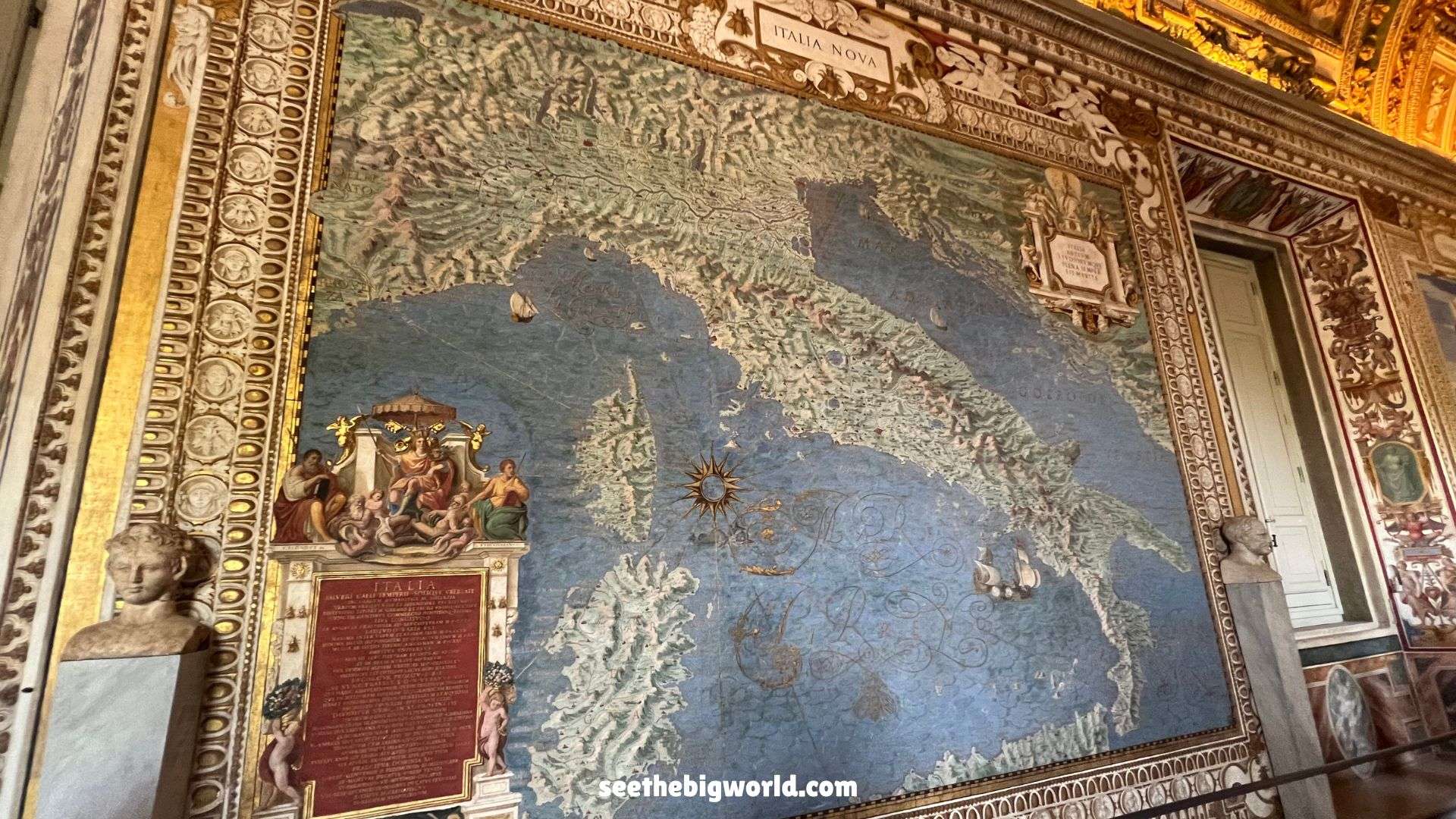
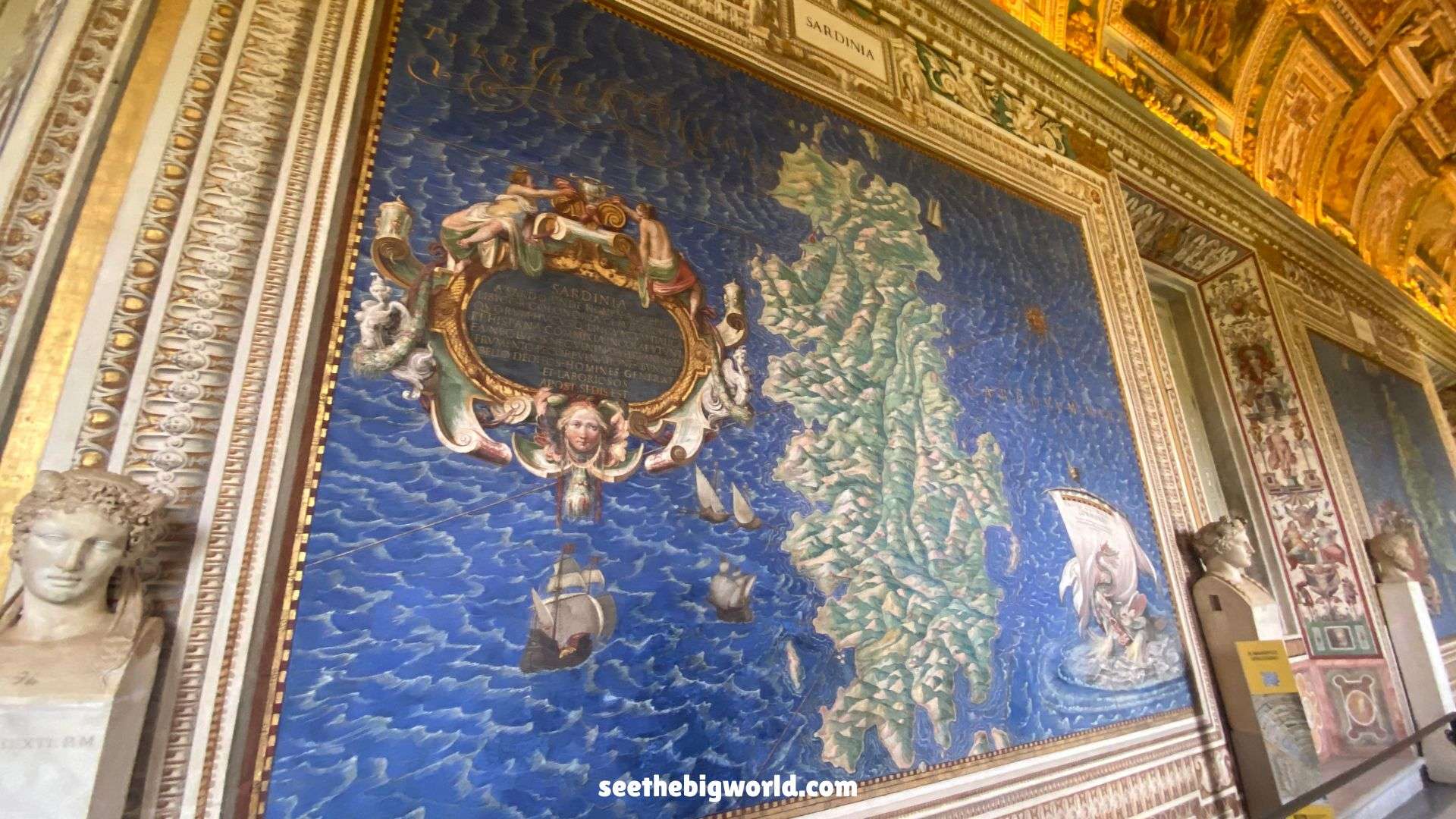

7. Raphael Rooms (Stanze di Raffaello)
The Raphael Rooms are one of the artistic treasures of the Vatican Museums, with the most famous painting being “The School of Athens.” The painting, set against a backdrop of classical architecture, shows central figures like Plato in orange robes and Aristotle in blue, symbolising the core philosophies of Western thought. Socrates appears in green, with Michelangelo positioned in the foreground in purple robes. Raphael himself is depicted in the bottom-right corner, wearing a black beret.
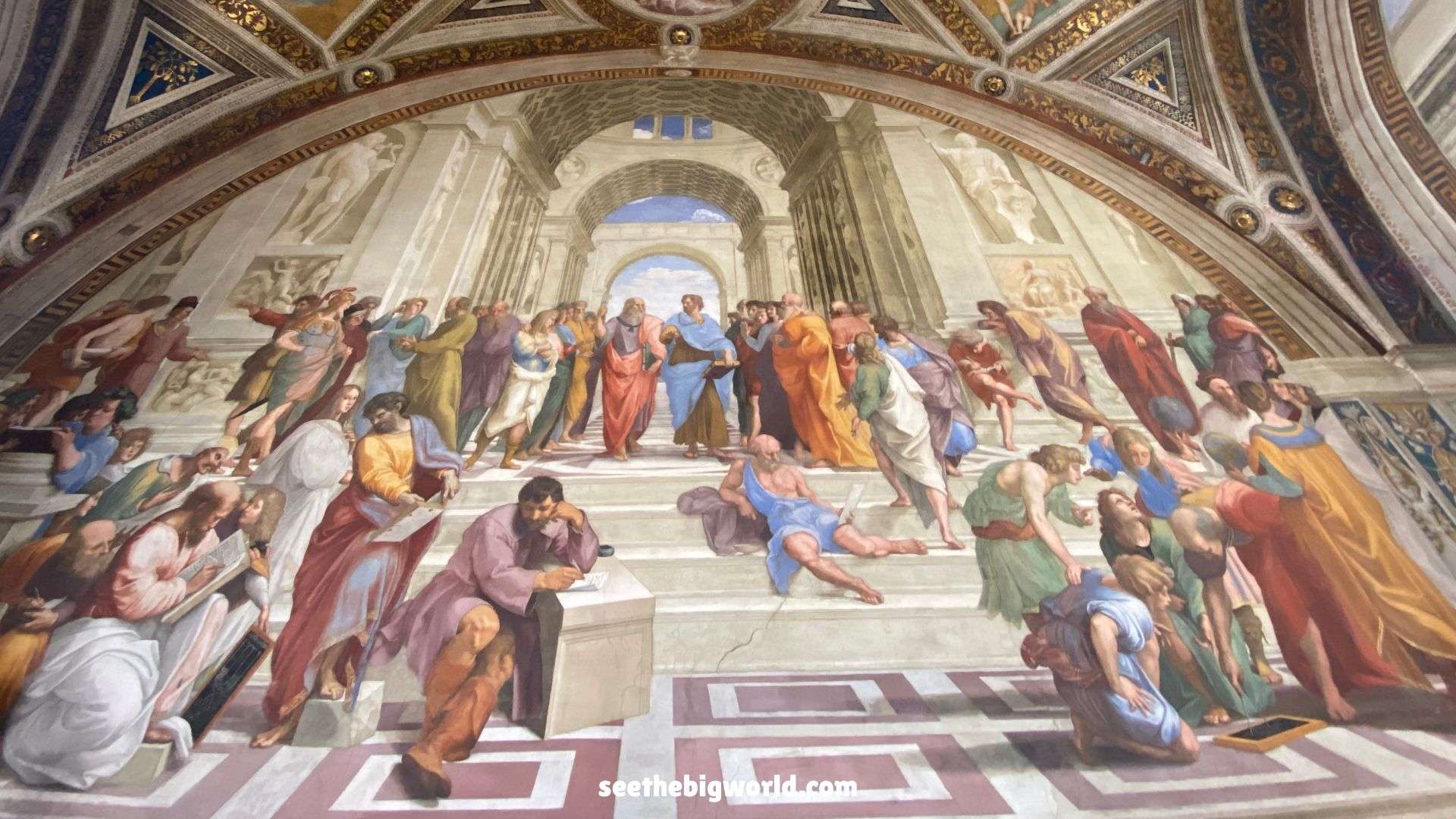
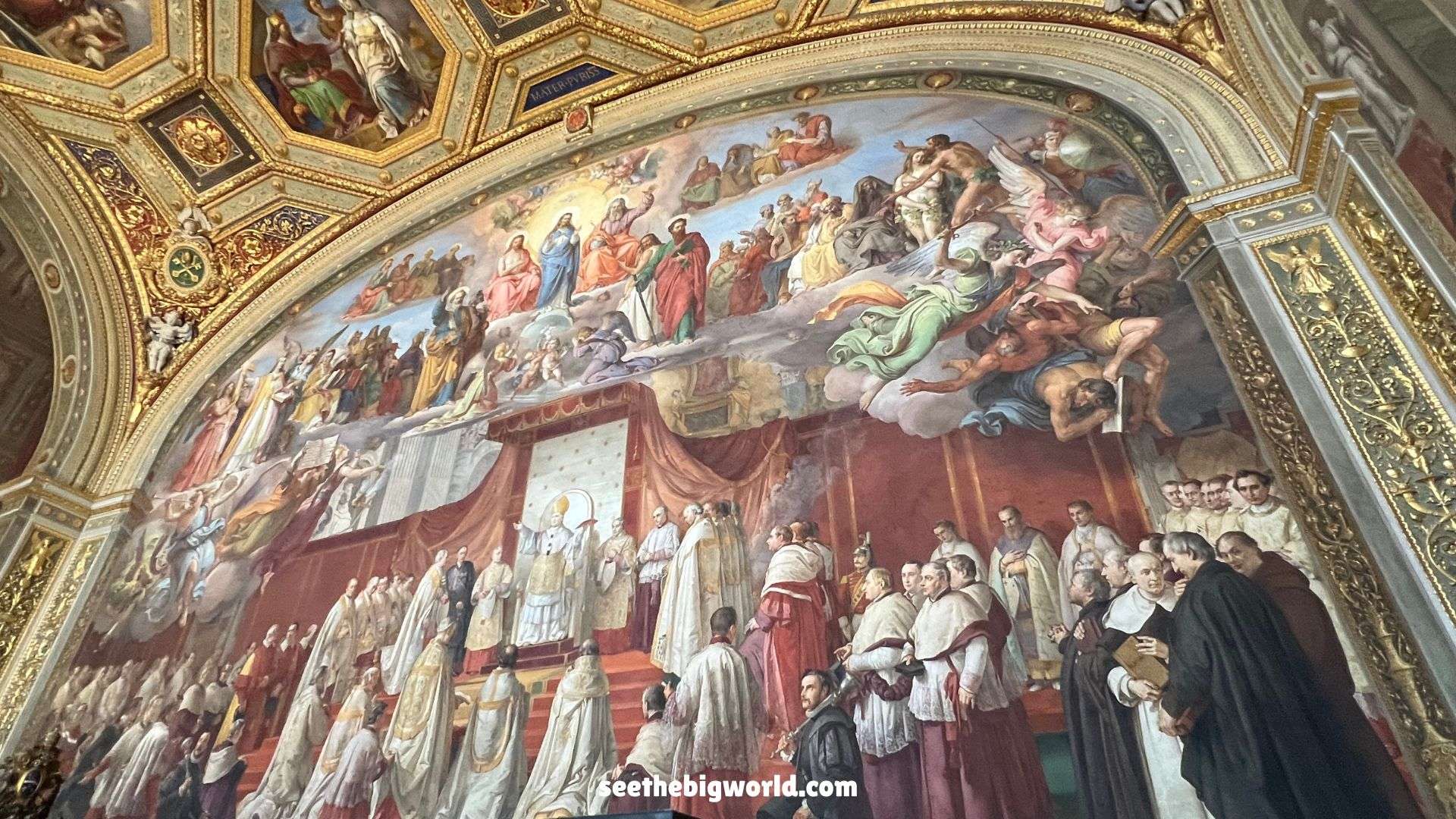
8. Sistine Chapel
Michelangelo’s masterpieces, “The Creation of Adam” and “The Last Judgment,” are the absolute highlights of the Sistine Chapel. The ceiling fresco “Creation of Adam” depicts the Biblical creation story, while the altar wall’s “The Last Judgment” presents a scene of the final judgment. While photography is prohibited in the chapel, witnessing these art pieces in person is an unforgettable experience, showcasing their incredible details and grandeur.
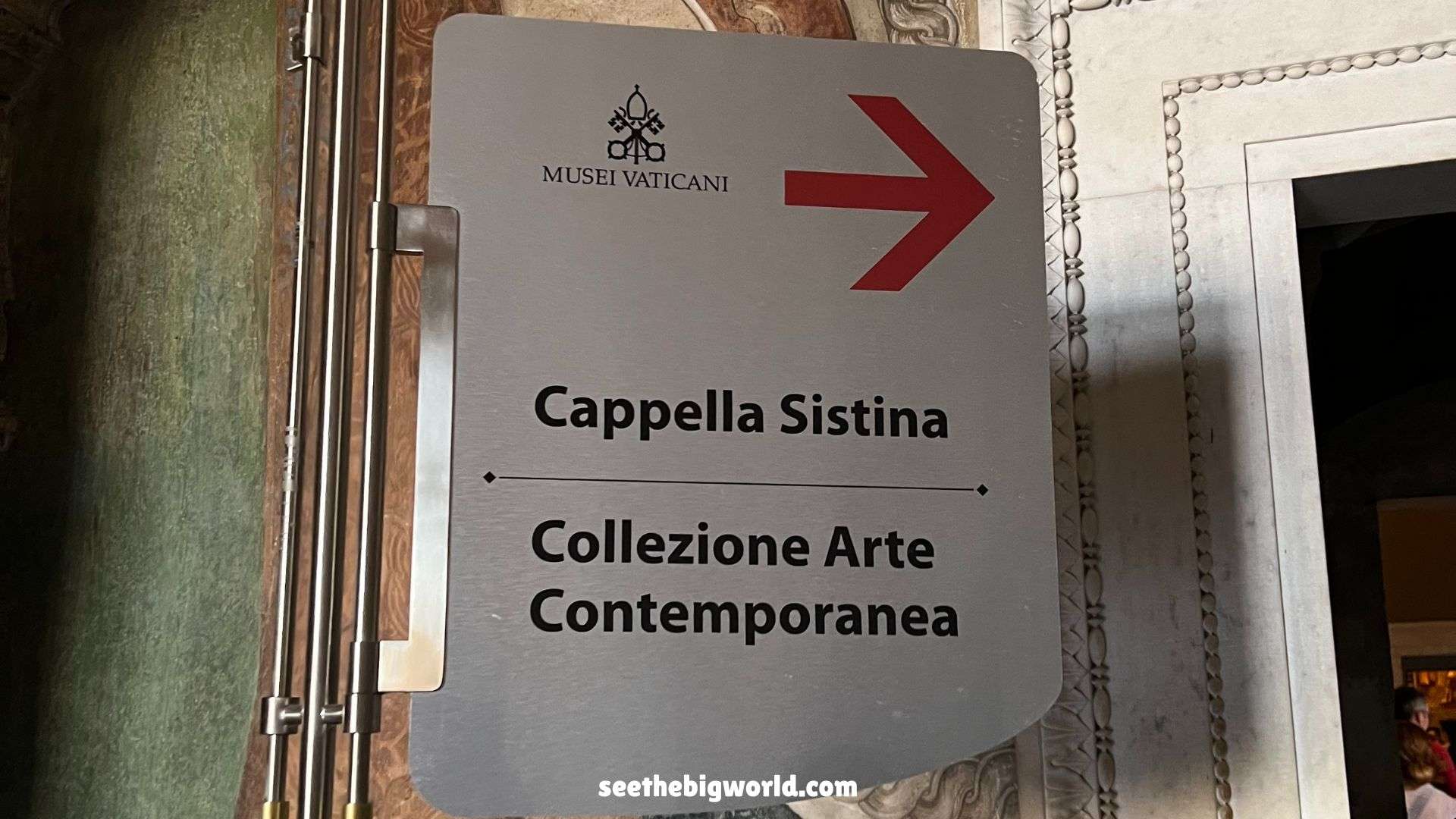
9. Spiral Staircase
Designed by Giuseppe Momo, the double-helix spiral staircase is one of the most iconic architectural elements of the Vatican Museums. Its intricate structure and design often draw visitors who pause to take photos.

10. Frescoes along the Ceilings
As you tour the museum, look up to see countless stunning ceiling frescoes. From religious stories to mythological scenes, each painting demonstrates the amazing skill and creativity of Renaissance artists.
